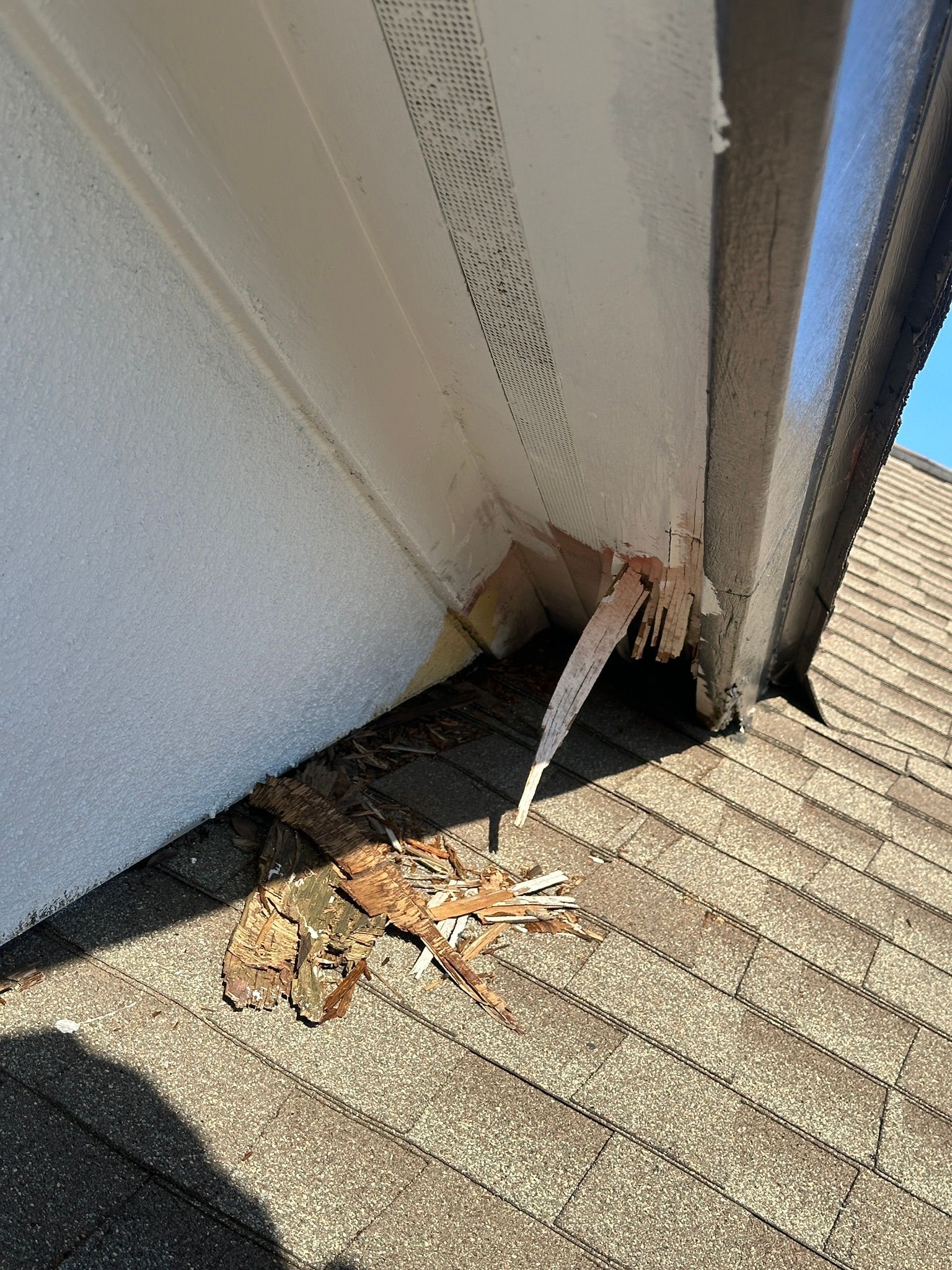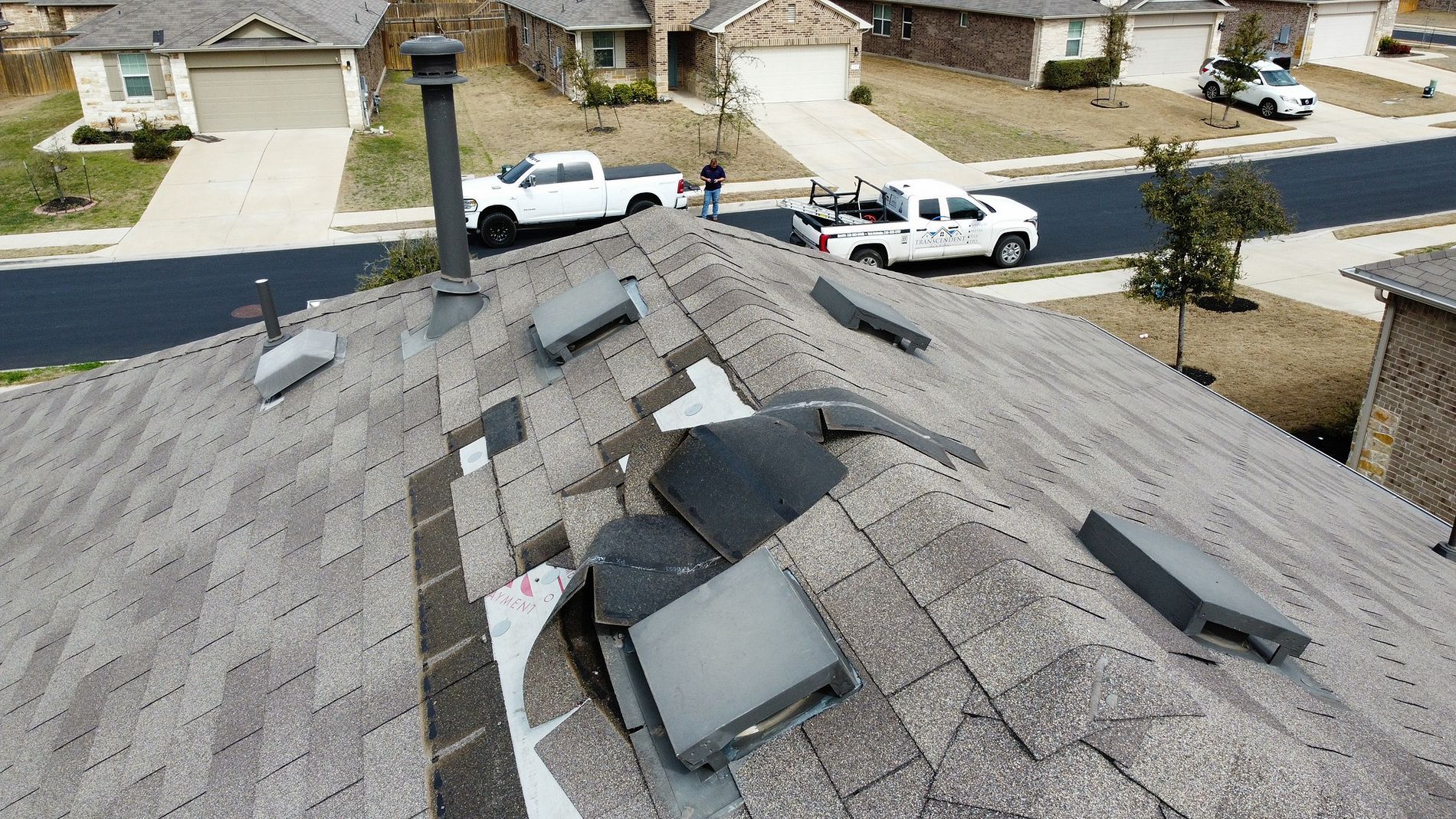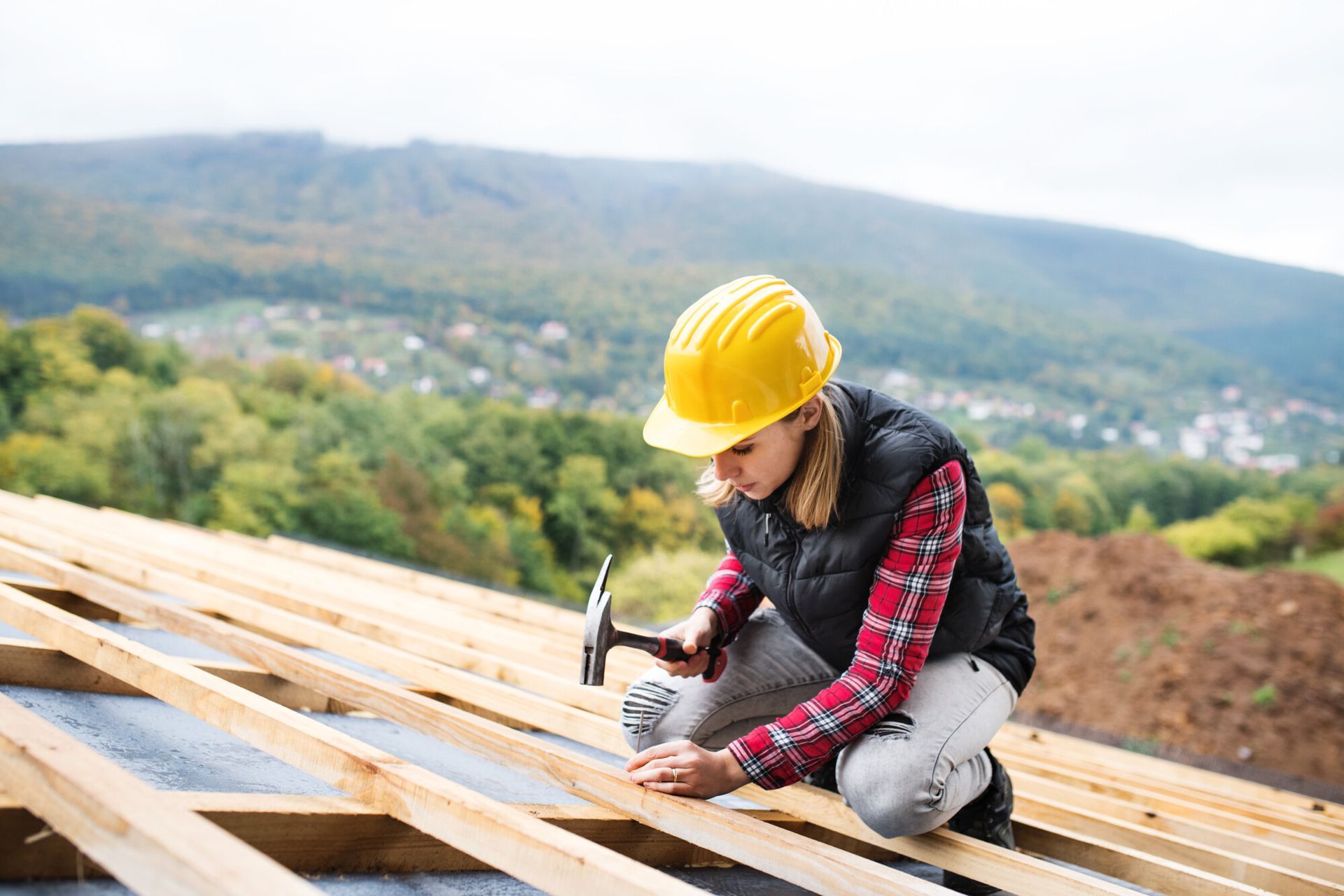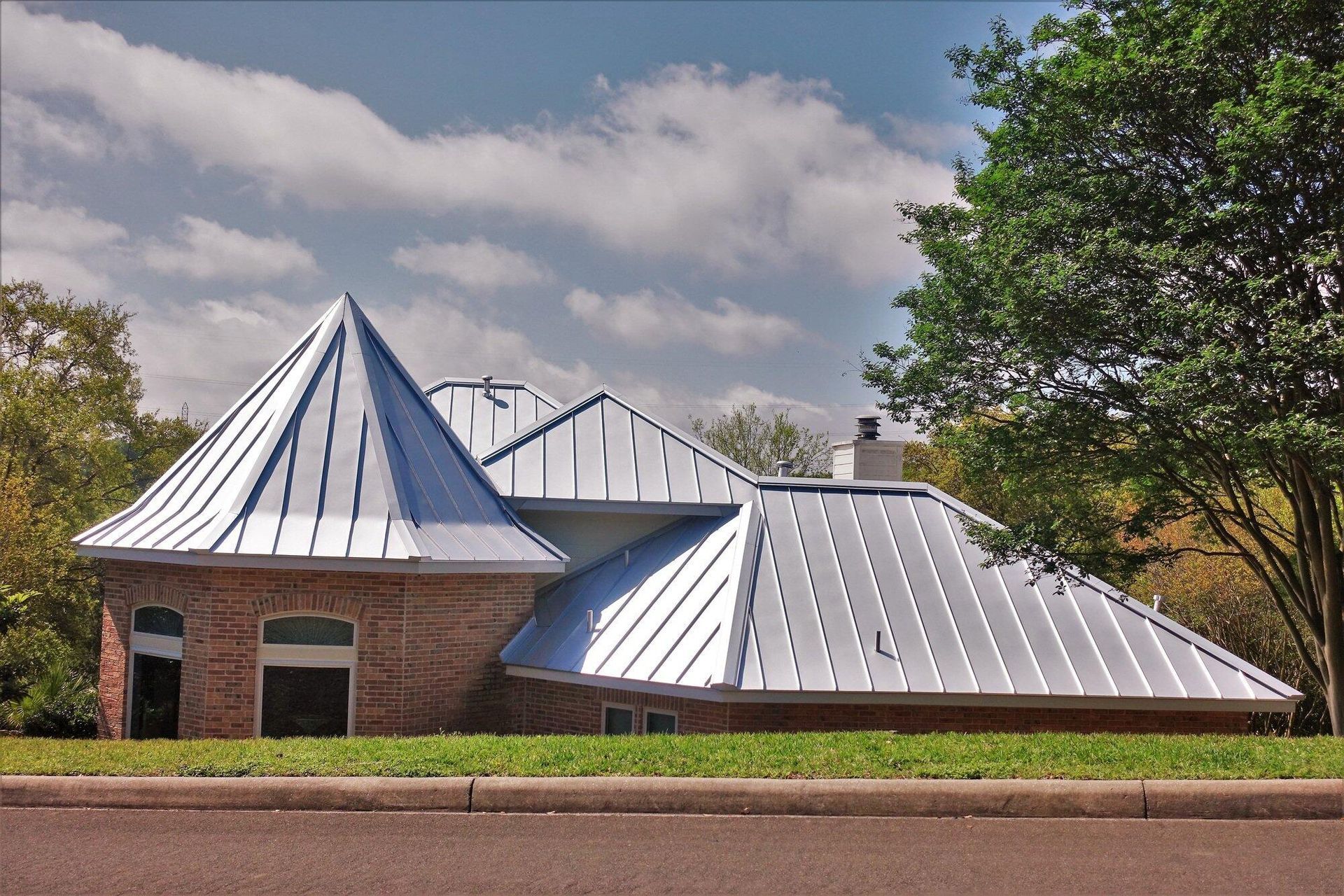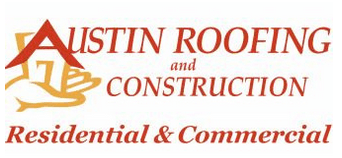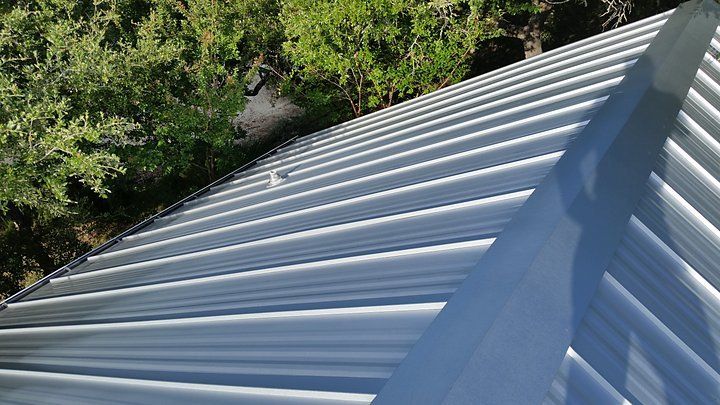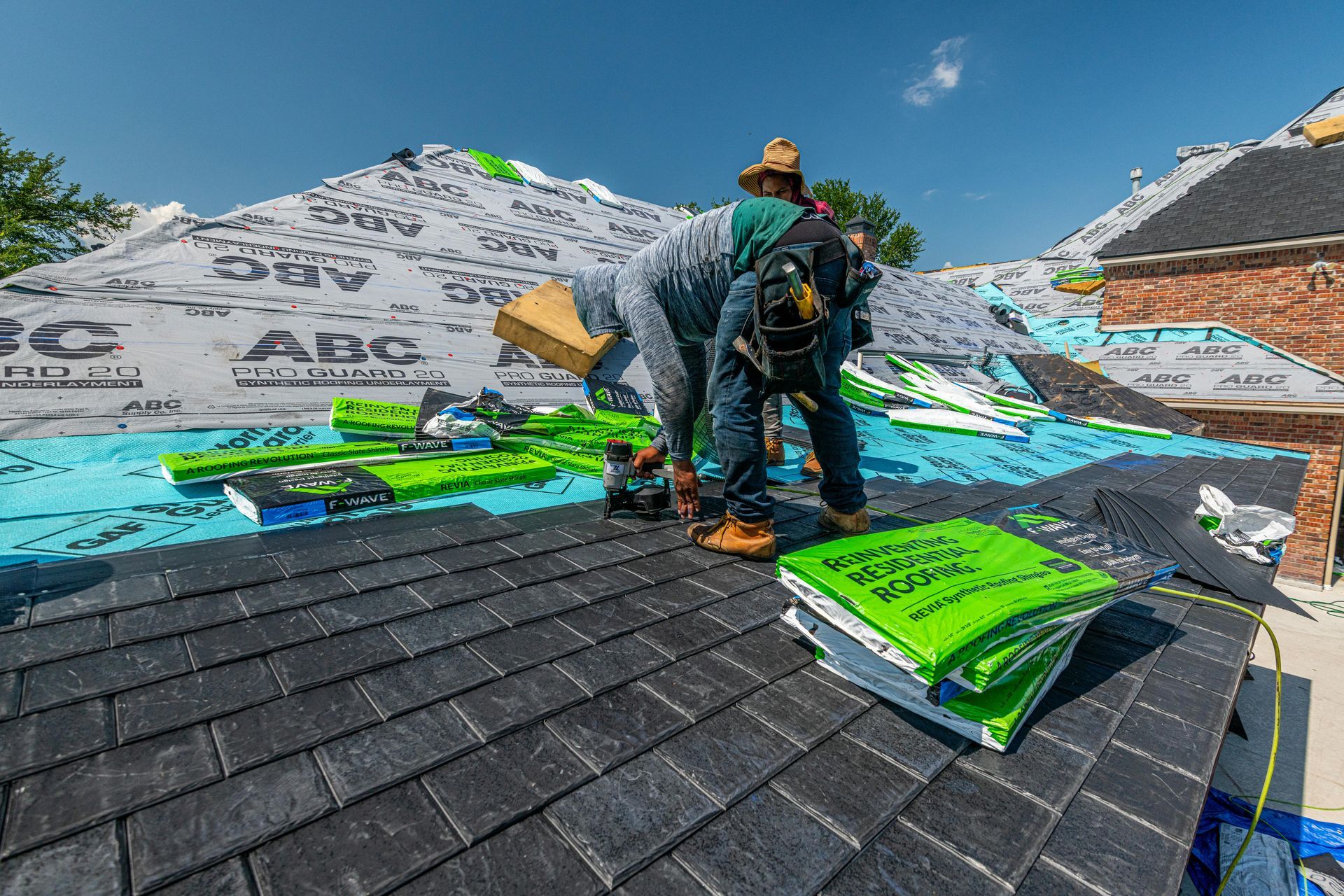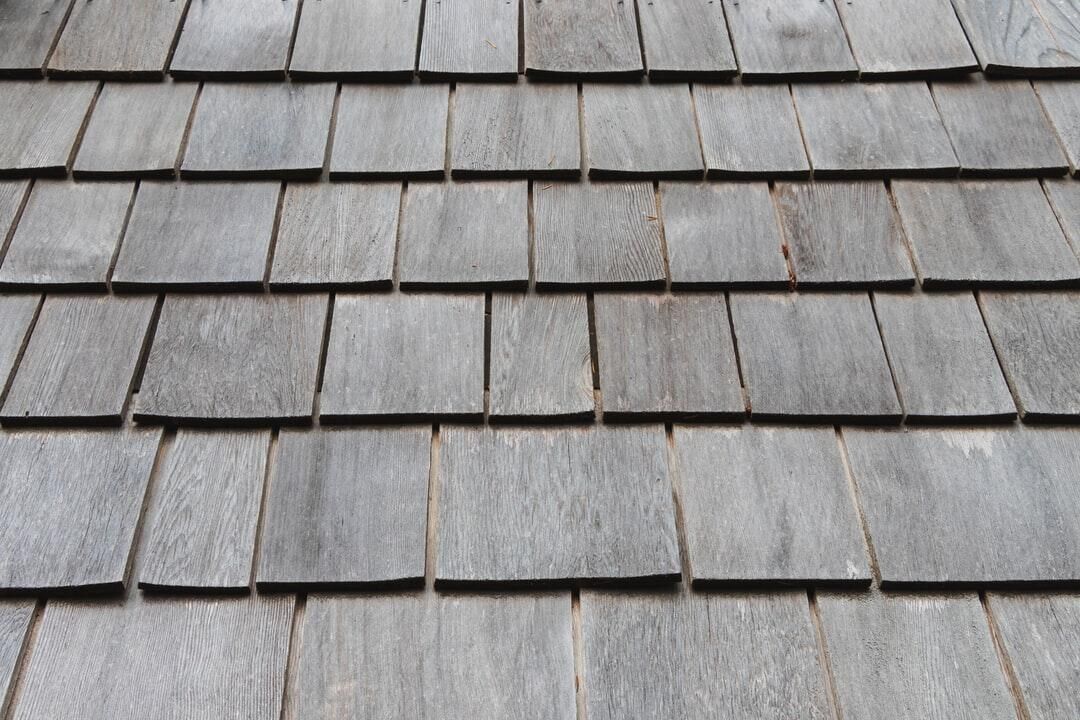Getting a Metal Roof in Austin: How Long Does It Take?
Time Line for Metal Roof Installations in Austin, TX
Time Line for Metal Roof Installations in Austin, TX
Choosing a metal roof in Austin makes sense because of the many benefits a metal roofing system can bring. Durability, reliability, and even environmental sustainability; metal is an excellent choice for both residential & commercial roofing systems. Your roof can be installed quickly and with minimal difficulty, and there are many options when it comes to color and thickness. As your roofing professionals, we can recommend the proper choices for your needs.
When you hire experienced roofing professionals for your metal roof installation, you’re ensuring a seamless process from start to finish. Here’s how:
- Efficient Project Management: Metal roof installations can typically be completed in as little as two to three days, though larger or more complex projects might extend to a week. Our team’s expertise ensures that your project stays on schedule.
- Quality Workmanship: With skilled professionals, you receive top-notch craftsmanship. This guarantees that your metal roof not only looks good but also performs optimally for years to come.
- Tailored Solutions: We guide you in selecting the perfect materials, balancing aesthetics with durability, and ensuring your new roof aligns with your unique requirements.
With our experienced team at your side, you can rest assured that your metal roofing project will be completed efficiently and to the highest standard, minimizing disruption to your daily life while enhancing your home’s protection.
As soon as we finish your free inspection, we will begin working on an estimate for your roofing project. Your estimate will depend on several factors. One of these will be the size of the roof because larger roofs require more material and more work. We will also take into account the pitch of your roof. When a roof has a steep pitch, extra safety measures are required. This increases the estimate.
Before diving into the installation phase, several preparatory steps are crucial.
- Project Scope and Complexity: The duration of the project can vary greatly. A simple shed roof might only take a few hours, while a large residential roof could span several days.
- Material Selection: Different metals, such as aluminum and steel, have unique installation processes. It's essential to familiarize yourself with the specific type of metal for your project to ensure proper handling and installation.
- Weather Considerations: Be mindful of weather conditions that might delay your project. Extreme temperatures and high winds can hinder the installation process, affecting both safety and material performance.
- Contractor Inspection: Our team will conduct a thorough inspection of your existing roof. This includes evaluating its current condition, assessing the type and number of fasteners needed, and identifying any additional requirements for a successful installation.
These preparatory steps ensure that once your project begins, it proceeds efficiently and safely, minimizing surprises and maximizing the longevity of your new metal roof.
We will also consider the quality of the material that you require or prefer as well as the amount of labor the project will take to finish.
Additional Considerations for Your Metal Roofing Project
- Project Complexity:
The complexity of your project can significantly affect the timeline. A straightforward installation might only take a few hours, while a more intricate residential roof could span several days. - Material Specifics:
Different metals, like aluminum and steel, have distinct installation processes. Being familiar with your chosen material is crucial for accurate planning. - Customization Needs:
Metal roofs come in various shapes and sizes, necessitating precise measurements and custom cuts. This adds to both the time and expertise required. - Weather Impact:
Weather conditions play a critical role. Extreme temperatures or high winds can delay the installation and affect the handling of materials. - Pre-Project Inspection:
Before starting, an inspection will be conducted to assess the current roof condition, determine the types and numbers of fasteners needed, and identify any other specific requirements.
Taking these factors into account ensures a smoother process and helps set realistic expectations for both time and cost. Please contact us to see what it will cost to get a wonderful metal roof on your home.
The Impact of Weather on Metal Roof Installation
When planning a metal roof installation, weather plays a crucial role in dictating the timeline. Here's how various conditions can influence the process:
- Temperature Extremes: Extremely high or low temperatures can complicate the handling and installation of materials. Metal panels, for instance, expand and contract with temperature changes, making precise alignment challenging in extreme conditions.
- High Winds: Gusty winds can pose safety risks for installers. Strong winds may prevent workers from safely positioning roofing materials, potentially halting the project until conditions calm.
- Rain and Moisture: Precipitation is another significant factor. Wet conditions not only create unsafe working environments but can also affect the integrity and adherence of certain materials. Moreover, moisture can interfere with the sealing processes, leading to long-term performance issues.
- Weather Resilience of Materials: Each roofing material has its own tolerance levels for various weather conditions. It’s essential to consider how specific materials react to the local climate during planning and material selection.
Understanding these weather-related factors enables better preparation, ensuring a smoother, safer, and more efficient metal roof installation. Properly accounting for potential weather delays allows for realistic scheduling and reduces unexpected project interruptions.
Understanding Metal Roofing Permits and Their Impact on Your Project Timeline
Installing a metal roof can significantly enhance your home's durability and aesthetics, but it's vital to understand the permitting process and its potential to affect your project's timeline.
What Permits Might Be Necessary?
- Building Permit: A building permit is often required for any major home renovation, including metal roof installations. This permit ensures that your project complies with local building codes and safety regulations.
- Zoning Permit: Some areas mandate a zoning permit, especially if your property falls within certain zones with specific restrictions or aesthetic guidelines.
- Historical District Approval: If your home is located in a historical district, you might need approval from a local historical committee to ensure your new metal roof does not conflict with preservation guidelines.
- HOA Approval: Homeowners Associations may have their own set of rules regarding exterior changes. Obtaining approval from your HOA might be necessary to stay in good standing.
How Permits Impact the Timeline
Obtaining these permits can add time to your project timeline. Here’s how:
- Application Process: The process of applying for permits can take anywhere from a few days to several weeks, depending on your local government’s regulations and workload.
- Approval Delays: Certain permits might require reviews or inspections before approval. For example, a building permit might need an inspector to confirm that your plans meet safety standards.
- Compliance Checks: If alterations are needed to meet permit requirements, additional time for redesigning or reevaluating plans may be necessary.
Streamlining the Process
To mitigate delays:
- Consult Early: Begin discussions with professionals early to understand permit requirements specific to your area.
- Paperwork Preparedness: Ensure all paperwork is in order before applying, including detailed plans and any requested supporting documents.
- Hire Experienced Contractors: Choose contractors familiar with local codes and processes, as they can expedite the permit process thanks to their knowledge and connections.
By anticipating these permit requirements and understanding their potential impact on your metal roofing project’s timeline, you can better plan and execute a seamless installation.
Small to Medium-Sized Home
A metal roof for a small to mid-sized home can be completed in a few days. After the roof has been measured and the materials gathered, the old roof will be removed. Then decking will be checked before new underlayment is put down. After that, the metal panels are installed, the final flashing is completed and the roof is finished.
Large Home
Putting a roof on a larger home will take slightly more time, depending on how large the home and the pitch of the roof.
Complex Roofs
Another factor in the time table is whether the roof is complicated or has multiple tiers or some type of complex design. Installing a roof in several different spaces will take a little bit longer than installing roofing in one large area. Many homes have one larger, main roof and then one or more smaller additional roofs over doorways or other areas. Other houses may have several smaller roofs instead of just one large space, covering different levels of the home.
Sheeting
One reason that metal roofing can be installed relatively quickly is that the material comes in metal sheets that are quickly put into place and secured to your building. Traditional asphalt shingles are much smaller, and that can take many hours. When you use a metal roof, you can quickly cover a large section of the roof in a short period of time.
How Long Does It Typically Take to Install a New Metal Roof?
When planning for a new metal roof, timing is crucial. Generally, the installation time varies depending on whether the project is residential or commercial.
For a typical single-family home, you can expect the installation to take about 2 to 4 days. This timeline ensures that the team can manage tasks efficiently while maintaining a high quality of work.
In contrast, a commercial building may require a longer timeframe, often stretching between 2 to 3 weeks. Larger surface areas and more complex structures contribute to the extended duration.
Factors Influencing the Timeline:
- Size of the Roof: Larger roofs naturally take more time due to the increased material and labor required.
- Weather Conditions: Adverse weather can delay the installation process, as safety and installation quality are prioritized.
- Complexity of Design: Roofs with intricate designs or multiple slopes may prolong the installation period.
- Team Size: A larger installation crew can speed up the process, provided they are well-coordinated.
Understanding these factors will help you better prepare for the installation process, ensuring a seamless and timely transition to your new metal roof.
The Impact of Crew Experience on Roofing Installation Time
When it comes to installing a metal roof, the experience level of the roofing crew plays a crucial role in determining how quickly the job gets done. Skilled and seasoned professionals can navigate the complexities of your roofing project with precision and efficiency. Here’s how:
- Faster Problem-Solving
Experienced crews are adept at identifying potential challenges and resolving them swiftly. This talent reduces downtime and keeps the project on track, minimizing delays. - Optimized Workflow
A knowledgeable team has developed efficient methods and best practices over years of work. They know the tools, understand the materials, and follow a streamlined installation process, which speeds up the entire project. - Better Quality Control
Veteran roofers understand the nuances of ensuring quality and durability. Their attention to detail can prevent mistakes that would otherwise slow down progress due to the need for corrections. - Effective Communication and Coordination
Experienced teams communicate clearly and coordinate well with each other and with suppliers. This cohesion ensures materials and resources are always ready when needed, preventing unnecessary pauses in work.
Ultimately, choosing a roofing crew with a wealth of experience can mean the difference between a smooth, timely installation and one riddled with hiccups and delays.
Understanding Metal Roof Installation Timelines
When considering the installation of a metal roof, the duration varies significantly between residential and commercial buildings.
Residential Projects
For a typical single-family home, expect the installation process to be relatively swift. Generally, residential metal roofing projects can be completed in 2 to 4 days. Factors influencing this timeline include:
- The size of your home
- The roof's design complexity
- The skill level of the contractors engaged
Commercial Installations
In contrast, commercial building projects demand more time and resources. The process can extend from 2 to 3 weeks. This extended duration is due to:
- Larger roof areas
- More complex architectural details
- Additional safety and logistical considerations
By understanding these timelines, homeowners and business managers can better plan for their roofing installation needs. Employing experienced professionals can further optimize efficiency and effectiveness in both scenarios.
Advantages of Metal Roofing in Austin
Long-Lasting
Metal roofing lasts a long time and will sometimes outlast the house itself. Most homeowners only need to install it once, even if they live in the same home for a long time. You can expect a metal roof to last for 40 to 70 years. Compare that to shingle roofing that can last from about 12 to 20 years.
Durable
Metal roofs are extremely durable and strong. A rust-proof coating ensures that they will not deteriorate in the weather. They will not crack or corrode, and pieces will not break away. Metal roofs can withstand winds of up to 140 miles per hour.
Fire-Resistant
Metal is an excellent material for stopping the spread of fire and for keeping a fire from passing through. Even if flames touch your roof for some reason, the metal will not ignite. Other kinds of roofing can sometimes catch a spark that becomes a fire that can take down the whole house. Metal roofing helps protect you from any fire that may spread from nearby buildings, other houses, or trees.
Insect Resistant
When you choose metal roofing, you don't have to worry about insects burrowing their way into your roof and damaging your home. Insects can cause incredible devastation, and they are hard to get out once they have settled into the material of a home. Metal roofing will help keep insects at bay.
Environmentally Friendly
Another important advantage of metal roofing is that it is sustainable. Metal roofs are typically made using recycled materials, and the materials are completely recyclable once the roof is no longer being used. This is as opposed to traditional shingles that often end up in landfills.
Energy Efficient
Metal roofing can save money on heating and cooling because they are efficient at holding energy. Air cannot escape through a metal roof, so your heating and cooling stay where they are needed.
Appearance
A metal roof is a wonderful choice for your home because it is beautiful as well as functional. Metal roofing doesn't deteriorate so it maintains a cleaner, newer look than shingles. It also comes in a variety of colors, so it's easy to match with the shutters, trim, or gutters on your home.
Options
Materials
Aluminum
The biggest benefit of aluminum roofing is that it immediately reacts to changes in the environment. This is the best defense against any type of corrosion. When aluminum and oxygen interact, it creates aluminum oxide. This becomes a layer that almost instantly protects the roof.
Copper
This soft metal is an extremely beautiful and elegant metal to use for a roof. Cooper roofing has an old-fashioned but sophisticated quality that many homeowners find is the perfect complement to their homes.
Steel
Steel is a powerhouse material when it comes to building. Steel is a metal alloy that has been used in industrial construction for a long time, but it is starting to become more popular in residential buildings as well. As one of the most recycled materials available, steel is a green choice for those who are interested in reducing their impact on the environment.
Tin
A tin roof is an old-fashioned, nostalgic choice that is rarely used for roofing in current times. You can still get the general look and feel of tin with galvanized steel or certain other materials.
Zinc
Zinc is a nice choice for roofing because it is completely recyclable and useful. It is also soft enough to lend itself to being bent into various shapes, so it brings creative options that other metals may not have.
Color
Match Gutters
Because metal roofing is available in a huge variety of different colors, it is easy to pull your entire roof area together by matching the color of the roof with the color of your gutters. This can be easily accomplished whether your gutters are a traditional color or are unique in color. You can look for an exact match or you can choose a coordinating shade.
Match Trim
Matching the color of the trim on your house to the color of your metal roof makes your home look amazing. You may want to choose your favorite metal roof color and then buy paint to paint the trim the same color. This brings character and personality to your home and makes it unique, memorable, and artistic.
Match Other Buildings
Use metal color options to pull together all the buildings on your property. If you have a shed, detached garage, or other outside building, matching the color of the roof pulls your property together and gives you a uniform look that is pleasing to the eye.
Match the Neighborhood
You can also use your metal roofing to match the other homes in your neighborhood or on your block. This can be a nice detail that adds value to your property as well as the property of your neighbors. Some neighborhoods may have rules about specific colors you can use for your roof.
Gauge Sizes
22-Gauge
A 22-gauge metal roof is the thickest and most durable choice. It is often chosen by homeowners who live in areas where winds can be exceptionally high or where damage due to weather is a constant threat.
24-Gauge
This is another strong and durable option. It is resistant to most bad weather conditions and may be chosen by homeowners who feel that they need extra protection. These heavier gauges maintain a beautiful appearance for many decades.
26-Gauge
This is the most commonly used thickness for metal roofing and is usually recommended for most commercial and residential buildings. It is strong enough for most conditions but may not be appropriate for areas where winds are high.
29-Gauge
This is the thinnest gauge of metal roofing but is often acceptable for most residential buildings. It is typically the least expensive option but is not the strongest or the choice that lasts the longest.
Metal roofing is the right choice for many people who own residential property and want to adequately protect their homes. Metal roofing protects from fire, insects, and general damage and will last a long time, so it makes the most sense long-term when it comes to providing a roof for your house.


